Few colors are more popular than sky blue. It’s so common and calming that artists, designers, and brands constantly seek new ways to incorporate more sky blue into their projects.
Fortunately, sky blue is one of the easiest colors to make. Granted, you must understand basic color theory and pick the right base colors for the project.
But you have so many options and can start from literally anywhere.
Below, I explain how I make sky blue colors with Phthalo, ultramarine, and cobalt blue.
I’ll also explain how to mix sky blue acrylic paint and answer the most common questions I get from my clients.
How to Make Sky Blue Paint
Mixing ultramarine blue or cyan with titanium is the easiest way to make sky blue. Add a dash of burnt umber to darken the blue or a few drops of yellow or magenta to mute it. Alternatively, use Phthalo blue and titanium white to make sky blue when mixing acrylic paints.
What is Color Blue?
Blue is one of the three primary colors in the RYB (Red, Yellow, Blue) model of the traditional color theory.
It’s also one of the primary colors in the additive RGB (Red, Blue, Green) color model.
It sits between violet and cyan on the light spectrum and is visible to the eyes at wavelengths between 450 and 495 nanometers.
Note that violet is at the short-wave end of the light spectrum. Thus blue is short-wave too.
However, most blue colors contain minor traces of other colors, such as green and violet. It’s likely what Newton classified as “Indigo.”
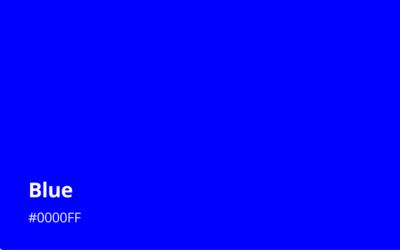
What colors make blue?
True blue, as seen on the electromagnetic spectrum, is a natural color you cannot create by mixing two or more colors.
However, in the CYMK color chart, you can make blue by mixing cyan (greenish-blue) and magenta (purple-red).
After that, you can create shades of blue by mixing the original paint with other colors.
Types of the blue color
The color defined as blue is the one found on the RGB color wheel. It’s also known as Blue X11. X11 is version 11 of the X Window System.
X is used for bitmap displays in most computer operating systems, including Windows and Linux.
It’s the brightest blue you can reproduce on a TV or computer screen. Alternatively, some professionals call it “color wheel blue.”
However, there are many other types of blue. CMYK blue, Pantone blue, and psychological primary blue are the most common.
CMYK blue is the blue tone used in printing. You can make it by mixing the printer’s cyan and the printer’s magenta at a ratio of 1:1.
Thus, it’s an approximate blue that depends on the tone and quality of the printing ink.
Meanwhile, Pantone blue is the blue color from the Pantone Textile eXtended (TPX) color system. It’s mainly found in the textile industry.
Finally, the psychological primary blue is the blue color from the Natural Color System (NCS).
NCS identifies six elementary color percepts of human vision, white, black, red, yellow, green, and blue.
You may also come across the Munsell blue. This refers to the blue color as identified on the Munsell color system.
The Munsell System defines colors based on three dimensions, i.e., hue, lightness, and chroma (color purity).
Crayola blue is less common. But if you must know, it’s from the Crayola crayons definition.
Shades of blues
You can adjust the original blue colors to create different shades. The most common blues shades are;
- Periwinkle blue: Also known as lavender blue, this is a mixture of white, blue, and red.
- Ultramarine blue: Ultramarine is a deep blue color pigment. It is made by grinding lazuli into a powder. Lazuli blue powder is nearly as expensive as gold.
- Medium blue: The medium shade of blue highly contrasts white and black. It’s the brightest blue beside the pure hue of blue light.
- Light blue: This is a pale shade of blue made by stirring some white onto any blue base to create a soft hue.
- Cobalt blue: This is a shade of blue made by sintering cobalt-2-oxide with aluminum (alumina) at 1200 degrees. It’s a vibrant and darker shade of blue.
Teal blue, sapphire blue, midnight blue, navy blue, royal blue, and dark blue are other common shades. Look at the contrasting difference between midnight blue vs navy blue.
What is the Sky Blue Color?
Sky blue is a shade of light blue. It it’s a bright blue resembling the color of a clear, blue sky at noon.
If you’re working on a digital project using the RGB colorspace, sky blue is composed of 53% red, 81% green, and 92% blue.
Meanwhile, sky blue comprises 43% cyan, 12% magenta, 0% yellow, and 8% black for printing purposes using the CMYK colorspace.
The hue angle is 197 degrees, the saturation is 43%, and the brightness is 92% if you’re working with the Munsell color system.
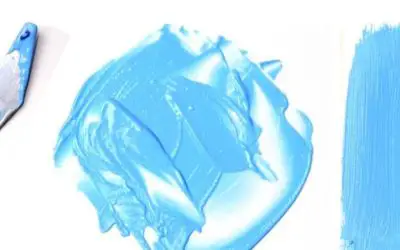
Meaning and symbolism
Sky blue has various meanings and interpretations in different societies and cultures.
For instance, it symbolizes trust and tranquility in many societies. Meanwhile, in others, it’s a symbol of despair and loneliness.
Also, blue is a sign of honesty, responsibility, and trust. That’s why the majority of organizations use it among their brand colors. It also symbolizes dedication, wisdom, and serenity.
What Colors Make Sky Blue?
You can make sky blue from nearly any shade of blue. Just mix it with white to get a lighter blue hue.
However, the results vary depending on the starting point. For instance, ultramarine and cobalt blue make beautiful shades of sky blue if you mix them with a pure white shade like titanium white.
However, cobalt blue makes a brighter light blue. Meanwhile, ultramarine colors make darker shades of sky blue.
Light blue and orange make an excellent combination for creating a muted sky-blue shade.
By blending the shades of light blue with an orange color like cadmium orange, you can achieve the desired muted sky blue tone with a subtle and pleasing effect.
In case you are interested in how to make blue lighter, mix ultramarine blue with white and add cadmium orange. You’ll get a warm light blue color leaning towards purple.
Meanwhile, cobalt blue + white + orange produces a cooler light blue leaning towards green.
Alternatively, add more white to make a brighter sky blue. Always add a few drops at a time for the perfect sky blue.
I’ve also made some beautiful sky blue paintings using phthalo blue. It’s available in two shades, a green shade and a red one.
I prefer the green shade because it’s more neutral and makes brighter tones of light blue.
You may be wondering if all the shades qualify as sky blue. Yes, they do. And there are many others.
The final shade depends on the original blue and white paints, which depend on the brand and quality.
Additionally, the final “sky blue” depends on what the painter understands by “sky blue.”
Some will paint the midday blue sky, others the RGB blue, and others the CMYK sky blue. These shades vary.
Finally, the blue sky appears different to everyone, depending on the time of day and your location.
So, if you ask ten people to paint it, each painting will be slightly different.
Method #1: Mixing sky blue using ultramarine blue
To make sky blue with ultramarine blue, you need a tube of ultramarine blue paint and some titanium white. You may also need magenta.
But how do you make the color magenta? Mix equal parts of red and blue paint together.
Note that a mixture of blue and red also makes the color purple.
How to make sky blue using ultramarine blue: Step-by-step guide
- Mix ultramarine blue and titanium white: Begin with titanium white. Add enough of the paint into a mixing bowl. Then add ultramarine blue. Fortunately, ultramarine isn’t as strong as other dark blue shades. So, you can use more without severe consequences.
- Add Quinacridone magenta: A dash of magenta makes light blue slightly reddish blue and gives it a warmer tone.
- Add more ultramarine blue: If the result is too purple, add more ultramarine to tame the purple hue. It produces a darker sky blue similar to the darkest parts of a blue sky.
- Add more white to lighten: At this point, you have a great sky-blue color. But if you desire brighter light blue, a few more drops of white do the job. Mix thoroughly after each drop, then assess the results.
- Add some yellow to dull it slightly (optional): A touch of yellow darkens the sky blue slightly. Add more titanium white to brighten it if necessary. It produces the perfect sky blue visible on a sunny day.
Method #3: Mixing sky blue with cobalt blue
Mixing cobalt blue and pure white produces an exciting sky-blue color. You have a few options.
For instance, add white in small increments until you achieve the desired sky blue. This produces a decent sky blue. Alternatively, add white plus a little magenta.
How to make sky blue from cobalt blue: A step-by-step guide
- Add cobalt blue to titanium white: Cobalt white is less dark and strong than ultramarine blue. So, you can add titanium white to the blue paint instead of starting with white. Add a few drops at a time, stirring in a circular motion to create a uniform mix.
- Add magenta: I love adding a splash of magenta when mixing sky blue because it produces the perfect warm tone. Quinacridone Magenta is my favorite. Alternatively, use Alizarin Crimson. Then neutralize it with yellow (Hansa Yellow Medium is the best) for a balanced sky blue.
- Add more cobalt blue: After adding the yellow paint, the color looks almost gray. To return on track, add more cobalt blue and white paint to brighten the shade. Cobalt blue makes a nice sky blue, much lighter than the one from ultramarine blue.
Method #3: Mixing sky blue using phthalo blue
Finally, I sometimes make sky blues with phthalo blue. One of the advantages of Phthalo blue is that it’s a strong blue with tremendous tinting strength.
Therefore, it makes beautiful light blues if you mix the potions correctly. Better still, you only need a small portion of Phthalo to make the sky blue.
How to make sky blue from phthalo blue: Step-by-step guide
- Mix the blue and white paints: Mix a tiny bit of Phthalo blue into a bigger potion of titanium white and mix the two thoroughly until there are no more streaks. It produces a darker shade of sky blue.
- Counteract the green hue with magenta: Unfortunately, Phthalo blue leans slightly towards green. So, I like to add some magenta paint to neutralize the green. Add just a little. Alternatively, use Alizarin Crimson. It produces a light purplish blue color.
- Add yellow to make it light blue: Typically, yellow plus blue makes green. So, you may be worried about your sky blue turning greenish. But we already addressed this problem by adding magenta, which prevents it from turning green. Again, add only small quantities of yellow.
- Add more white or blue: This step is optional and depends on your needs. For instance, add more Phthalo blue only if you feel the color is too light. Alternatively, add more white only if you think it’s too dark. The final shade is a gorgeous sky blue.
How to Make Sky Blue Acrylic Paint
You can follow many different methods to mix sky-blue acrylic paint. I like mixing ultramarine blue and titanium white.
Ultramarine is a vibrant shade of blue that produces stunning light blues. Moreover, you only need small amounts of ultramarine to mix sky-blue colors.
But for this experiment, I used sky blue and white oil paints to mix a sky blue acrylic paint.
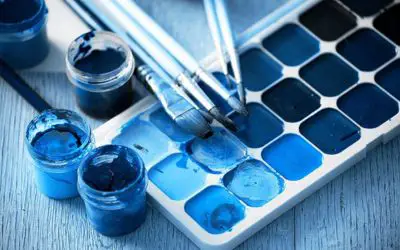
Requirements
- Sky blue oil paint
- Titanium white oil paint
- Black oil paint
- Yellow ochre oil paint
- Palette knife
- Paint brushes
- Canvas
How to mix sky blue with acrylic paint: A step-by-step guide
- Determine how much paint you need: I mix sky blue and titanium white paints at a ratio of 1:1 for the best results. Thus, to create a cup of sky blue paint, I use half a cup of each color.
- Mix blue oil paint: Add the white oil paint on a clean mixing medium. Then add the blue paint in small bits, mixing the two thoroughly as you add more blue. You’ll get a pastel blue color. Add a few more drops of blue if it’s too light or white if it’s too dark.
- Add the mixture to white oil paint: Place white paint in the middle of a clean mixing surface. Then add the mixture of sky blue and white paint you prepared earlier. Mix it thoroughly until you have a bright blue or almost gray color, adding more blue paint if it’s too white or gray.
- Add yellow (for a warm light blue shade): The midday sky blue is a warm blue shade. Fortunately, it’s easy to make a warm sky blue. Mix ¼ teaspoonful of yellow ochre with the blue paint and mix thoroughly. Then add a few more drops until you achieve the desired warmth.
- Add black oil paint (for dark blue hues/dark blue color): Mixing a speck of black paint into the sky blue makes a somewhat indigo color. Alternatively, add more ultramarine blue if you don’t want to make the sky blue darker. (In case you’ll be looking to make indigo color, we have an article on what colors make indigo to guide you).
- Finish up: I add oil to all the acrylic paints I mix for greater consistency. Linseed oil is the best. Add small drops and stir gently until you achieve the desired paint thickness.
FAQs
Which blue should I use to mix sky blue colors?
Ultramarine blue is the best blue for making sky-blue colors. It’s a deep, vivid blue color. But more importantly, it’s a warmer blue color that makes exciting sky-blue shades. Alternatively, consider cyan. The greenish-blue color makes bright sky blues.
What paint is best for sky blue?
Ultramarine blue is the best color for sky-blue shades, though cobalt blue is an even better choice if you’re willing to spend a little more. It’s made by sintering cobalt II oxide and alumina at 1200 degrees, a technically demanding process. Phthalo blue is another popular choice.
What is the color code for sky blue?
The hex code for the sky blue color is #87CEEB. This means it contains 53% red, 81% green, and 92% blue if you work with RGB colors (mainly digital projects like TV and personal computers). Meanwhile, for printers using the CMYK color scheme, sky blue is composed of 43% cyan, 12% magenta, 0% yellow, and 8% black.
What color makes light blue?
The two colors required to make light blue are blue (any shade) and white. Gradually add white to the blue base until you achieve the desired shade of light blue. Alternatively, use cyan and white. Again, add white to the cyan color until you get to the desired shade of light blue. I often add small quantities of magenta, yellow, or black colors for the perfect light blue.
What is the best sky blue acrylic paint?
Apple Barrel Multi-Surface Acrylic Paint is the consumer’s favorite. Its creamy, smooth texture dries to a beautiful satin finish. Moreover, you can use it on just about any surface, from metal to wood and canvas to paper mache. Alternatively, consider Arteza or ForlkArt Acrylic Paints.
Summary
It’s easy to create sky-blue paint. All you need are blue and knowing what colors mixed make white.
Add the blue paint into a container and mix in a few drops of white at a time, mixing thoroughly until you achieve a uniform light blue.
I mainly use ultramarine blue as the base color. But cobalt blue or Phthalo blue are just as effective.

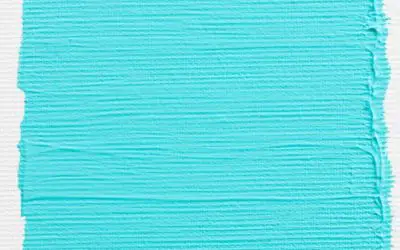
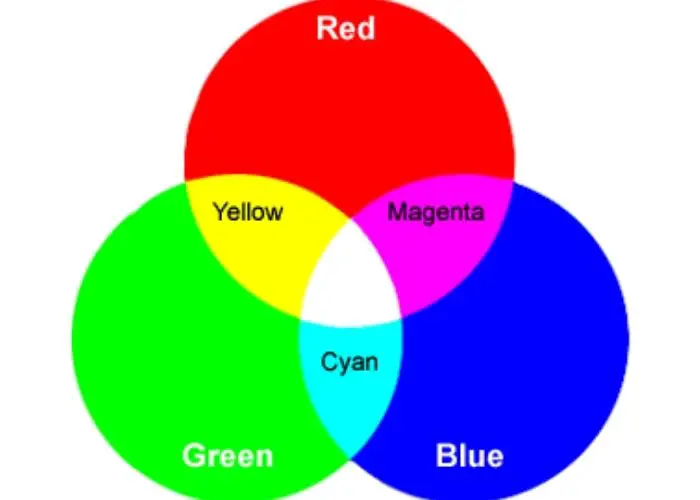
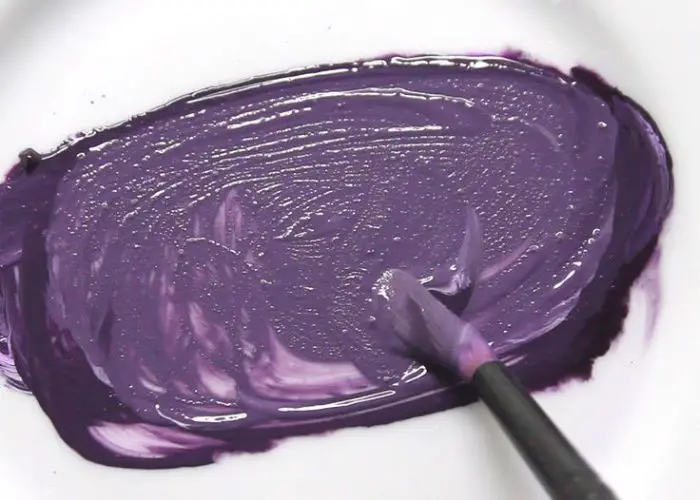
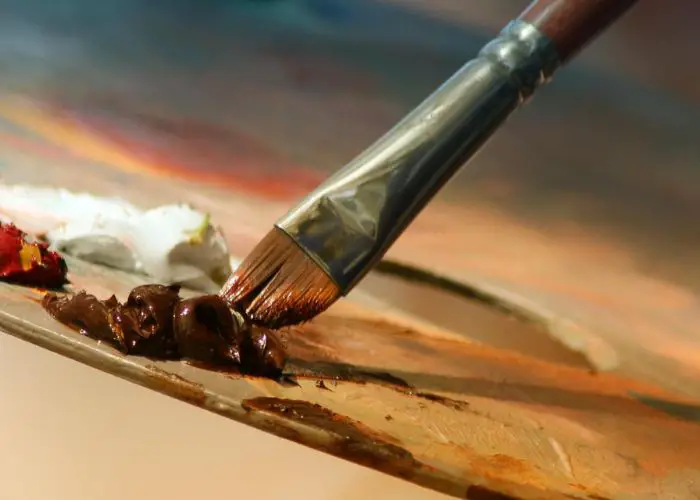
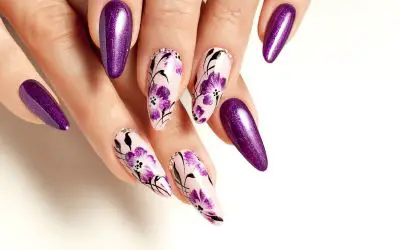



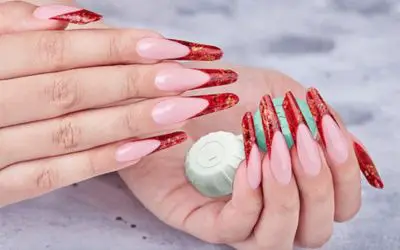
Leave a Reply